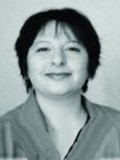
More Mental Health Articles
Empower Yourself To Reverse Arthritis
Osteoarthritis is not a certain result of growing older. Joints don't have a calendar telling them how old you are. What they do know is the impact of how you use your body; the longer you live, the greater the potential impact. But there is plenty you can do to undo the impact on your body.
If you understand how arthritis occurs, then you can understand how to reverse it. First, let's get to know your joints. A joint is a place where two bones come together. Each joint is surrounded by a capsule of fibrous tissue. Look inside a healthy joint capsule and you'll find fluid filling the space and cartilage coating the end of each bone; both protect bones as they make contact during movement. Muscles surround the outside of the joint capsule. Contracting these muscles creates movement. Place your hand just above your knee; as you bend and straighten your leg, you'll feel those muscles move.
A joint can stop being healthy when its space is compressed by excessive muscle tension. This may be the result of years of overuse, especially repetitive motion; as muscles tighten, they squeeze the joint. Less space means less room for fluid to flow and more frequent rubbing of bones until cartilage can completely wear away. Pain and limited movement are the results.
In many cases your body can repair itself. To begin healing osteoarthritis, you will need to
1. Manage the pain caused by arthritis, so you feel able to take steps for healing,
2. Provide nutrients needed to rebuild cartilage and joint fluid, including glucosamine, and,
3. Recreate space in the joint capsules by restoring flexibility of surrounding muscles.
Equal emphasis on all three parts can slow or reverse the progression of arthritis; however, many people overlook the role of their muscles in part three. Here are some ways to restore muscle flexibility to reduce osteoarthritis
Movement Muscles like to move or they become stiff. Get enough movement but don't overdo it. Water aerobics is great for your legs and your hands; if you prefer walking, swing your arms freely for full-body benefit. Aim for 20-30 minutes per day, starting with less if necessary and building up to that goal.
Stretching Muscles also like to stretch. Stretching lengthens muscles and flushes waste that makes them stiff. Learn safe stretching from a reliable resource such as a physical therapist, personal trainer, or credible internet resource.
Yoga is a form of stretching that also teaches you to relax. Look for a gentle yoga class; some instructors specialize in working with seniors and others with limited flexibility.
Massage Muscles love massage. It's highly effective in restoring flexibility and managing pain. Because it's a passive activity, massage isn't limited by your ability to move. A skilled massage therapist like me knows how to work within the boundaries of your comfort to provide maximum benefit.
With the guidance of your physician and other health professionals, you can use these ideas to empower yourself to restore flexibility, agility, and pain-free living at any age.

















